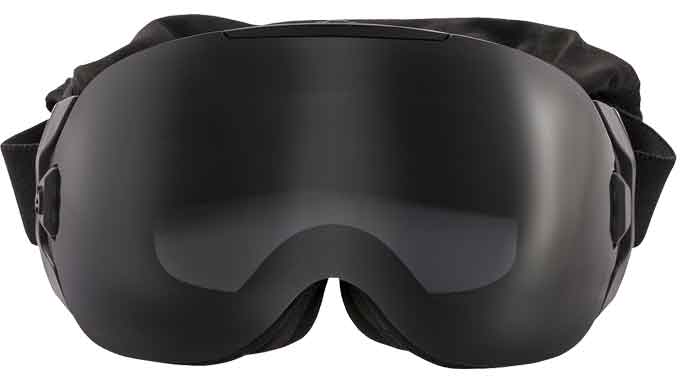
Special Operations Forces (SOF) personnel operate for long durations in harsh environments that expose them to punishing temperatures, winds, heat, and humidity, as well as many other environmental hazards.
Combat eyewear protection is necessary to prevent eye injuries in these circumstances.
 As operators rapidly change environments or undergo physical exertion, fogging/condensation can form inside protective eyewear resulting in a substantial decrease in visual acuity which restricts functionality in austere environments.
As operators rapidly change environments or undergo physical exertion, fogging/condensation can form inside protective eyewear resulting in a substantial decrease in visual acuity which restricts functionality in austere environments.
To meet these requirements, Abom, designer and manufacturer of the world’s first anti-fogging heated goggles has received a Phase I SBIR $148,495 award from United States Special Operations Command (USSOCOM) under the U.S. Department of Defense (DoD) Small Business Innovation Research (SBIR) Program.
The SBIR award is for ABOM’s team to conduct a feasibility study to develop an innovative tactical active anti-fogging goggle or spectacle in a smaller form factor than traditional goggles.
(Learn More. Courtesy of Abominable Labs and YouTube. Posted on Aug 14, 2017.)
The goal of this feasibility study is to develop tactical active anti-fogging goggle or spectacle platform that enhances situational awareness, operational readiness, and sustained human performance and effectiveness while operating in harsh environmental conditions.
The preferred tactical goggles or spectacles shall not employ passive anti-fog technologies such as coatings to prevent or reduce condensation.
Power supplies shall be self-contained in the spectacle/goggle system and shall not exhibit any significant snag hazards.
The Small Business Innovation Research (SBIR) program is a United States Government program, coordinated by the Small Business Administration, in which all federal agencies with extramural research budgets in excess of $100 million have a percentage reserved for contracts or grants to small businesses.
(Learn More about the SBIR Program. The Small Business Innovation Research (SBIR) program encourages U.S. small businesses with fewer than 500 employees to provide quality research and develop new processes, products and technologies to support security challenges across the Homeland Security Enterprise. This video provides guidance on how to learn about S&T’s needs, how those needs become SBIR topics, and more. Courtesy of DHS Science and Technology Directorate and YouTube. Posted on Mar 5, 2018.)
Annually, the DoD SBIR budget represents more than $1 billion in research funds. Over half the awards are to firms with fewer than 25 people and a third to firms of fewer than 10.
A fifth are minority or women-owned businesses. Historically, a quarter of the companies are first-time winners.
The SBIR Program is structured in three phases.
- Phase I (project feasibility) determines the scientific, technical and commercial merit and feasibility of the ideas submitted
- Phase II (project development to prototype) is the major research and development effort, funding the prototyping and demonstration of the most promising Phase I projects
- Phase III (commercialization) is the ultimate goal of each SBIR/STTR effort
 Should ABOM later be awarded a Phase II SIBR under this topic, ABOM would continue to develop and demonstrate prototype systems determined to be the most feasible solution during the Phase I feasibility study on a tactical active anti-fogging goggle or spectacle.
Should ABOM later be awarded a Phase II SIBR under this topic, ABOM would continue to develop and demonstrate prototype systems determined to be the most feasible solution during the Phase I feasibility study on a tactical active anti-fogging goggle or spectacle.
Also, based on the results and recommendations generated during Phase I, ABOM would produce full functioning prototypes and test those systems in a simulated operational environment.
ABOM’s heated anti-fog solutions use an ultra-low power thin-film technology with a transparent, conductive layer sandwiched between two polycarbonate lenses.
(Learn More. Abominable Labs introduces the world’s first truly fog free goggles. Courtesy of Abominable Labs and YouTube. Posted on May 1, 2015.)
ABOM thin-film technology is designed to optimize battery life while delivering maximum power conservation.
ABOM’s latest HEET goggle solution features an integrated custom micro-controller that manages power to the system from the two integrated, internal lithium-ion batteries, which are rechargeable utilizing the standard Micro-USB port.
The goggle will last six hours or more in the Always-On mode and up to over a week in the On-Demand mode before needing a recharge of the on-board batteries, providing completely fog-free optics in a variety of weather conditions.
(See in Action. Courtesy of Abominable Labs and YouTube. Posted on Mar 13, 2017.)
















